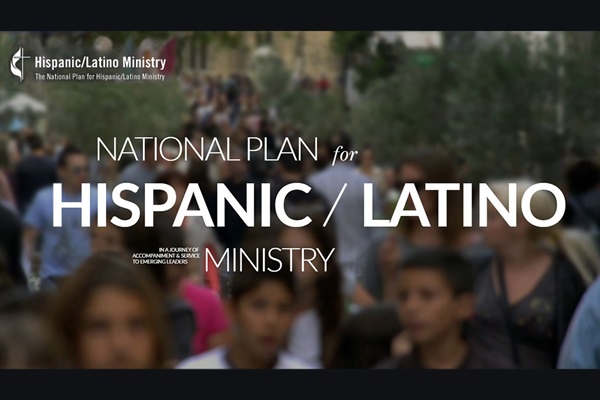The National Plan for Hispanic/Latino Ministry was the first of the racial/ethnic plans to be established in The United Methodist Church. Approved by the 1992 General Conference, the Plan strives to develop Hispanic/Latinx leaders and faith communities working as equal partners in decision-making in the broader church.
The explosive population growth of the Hispanic community in the United States during the 1980s and early 1990s led to the recognition of a need to develop a Plan for coordinated national Hispanic ministries. From its earliest days, the Plan’s goals included developing materials and strategies for training lay and clergy leaders, strengthening Hispanic/Latinx congregations, creating language resources and developing new community ministries.
Learn More
A Journey of Accompaniment and Service 2017-2020
Report on the National Plan for Hispanic/Latino Ministry to the 2020 General Conference
The National Plan for Hispanic/Latino Ministry works in collaboration with several general agencies of the church to develop principled Christian leaders who can meet the needs of current generations of Hispanics/Latinx people. Through its partnerships with Global Ministries, Higher Education and Ministry, Discipleship Ministries, Church and Society, and the General Commission on Religion and Race, the NPHLM helps to provide leadership scholarships, strengthen theological training for pastors and lay leaders, and offer training events for church planters.
The Plan has a strong commitment to acompañamiento (accompaniment) with annual conferences to provide leadership development and ministry strategies that will impact and transform Hispanic/Latino communities. The Rev. Dr. Lydia Muñoz, executive director of the NPHLM, explains, “We use the term ‘acompañamiento,’ as our missional purpose. As a musician, this term speaks volumes to me. ‘Acompañamiento’ means ‘to accompany’ and often refers to the accompaniment utilized to support and complete the melody in a song. Or in our case – the body of Christ. Our role is to accompany conferences, pastors and laity to vision and strategize Hispanic/Latinx ministry in their specific contexts. To help our church fulfill the dream of becoming a beloved community where we all thrive.”
This accompaniment includes technical and financial assistance, identifying and commissioning racial/ethnic missionaries, developing new places of worship and ministry, and deploying consultants and facilitators with the skills, tools, and experience to respond to the needs of annual conferences in their own contexts.
The NPHLM also raises awareness and keeps leaders and churches informed about immigration and other social concerns and creates educational materials to foster effective dialogue about practical solutions around the concerns critical to Hispanic/Latinx communities.
Muñoz shared the Plan’s vision from its beginning. "The original legislation of the National Plan for Hispanic/Latino Ministry approved by 1992 General Conference affirmed a vision of a dynamic and growing United Methodist Church, joyously sharing, and living the Good News of Jesus Christ in a multiplicity of places, urban and rural, in congregations large and small, and in a variety of cultural settings. In this church, groups which traditionally have been disenfranchised will be full partners in Christ’s ministry, and the gifts of every Hispanic male and female, young and old, factory worker and professional, immigrant and native will be put to use for the upbuilding of the entire body (1Thessalonians 5:11). A church in which such diversity, rather than dividing, unites, joining all in a common task, in a variety of circumstances, toward a common goal (1Corinthians 12:12-13).”
The original name for this initiative was “National Hispanic Plan” with “Latino” was added later. The name change reflected inclusiveness because the commitment was with all Latin-American communities, including Portuguese-speaking Brazil.
Today, this commitment transcends continental boundaries. It goes all the way to Europe because of the large number of Hispanics (including Spaniards and Latin Americans) on the continent.
This content was produced by Ask The UMC, a ministry of United Methodist Communications.





